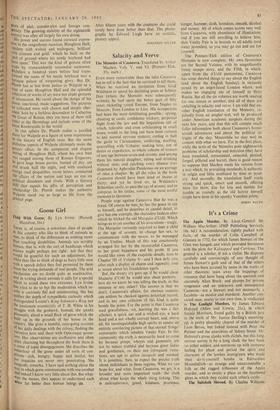It's a Crime
The Appin Murder. By Lieut.-General Sir William MacArthur. (JMP Publishing Ser■ ices, 10s. 6d.) A reconsideration, tightly packed with facts, of the murder of Colin Campbell of Glenure in 1752, for which James Stewart of the Glen was hanged, and which provided Stevenson with the plots for Kidnapped and Catriona. The general is a scholar, if not a stylist. He disposes carefully and convincingly of any thought of James Stewart's guilt and of that of the others who have been accused by name in the works of other theorists; tears away the trappings of romance that have hung about the uncouth and uncomely Allan Breck; and plumps for private vengeance and an unknown and unsuspected Cameron—not a Stewart and not necessarily a Jacobite—as motive and murderer. Another con- victed man, nearer to our own time, is vindicated in The Gaslight Murders, by James Edward Holroyd (Allen and Unwin, 21s.), in which Steinie Morrison, found guilty by a British jury in the teeth of Mr. Justice Darling's summing- up, is pretty plausibly cleared of the murder of l.eon Beron, but linked instead with Peter the Painter and the anarchists of Sidney Street. 11r. Holroyd's prose clanks with clichés, but this long, serious survey is by a long chalk the best book on either subject, and summons up with immense feeling for place and period the spirit and character of the lawless immigrants who made their do-it-yourself bombs in Edwardian Houndsditch—as strange and unaccountable a folk as the ragged tribesmen of the Alvin murder, and as exotic a place as the hcathered glens in which they raided each other's cattle.


































 Previous page
Previous page